story and photos by Kayte Deioma
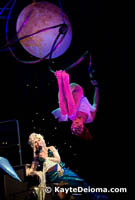 In 1976 – six years before the first Cirque du Soleil production – Circus Roncalli was born. It was the brain child of Bernhard Paul, an Austrian who left his job as Art Director at an international advertising agency to follow his dream of starting a circus. His new spectacle was dense with the
In 1976 – six years before the first Cirque du Soleil production – Circus Roncalli was born. It was the brain child of Bernhard Paul, an Austrian who left his job as Art Director at an international advertising agency to follow his dream of starting a circus. His new spectacle was dense with the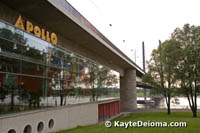 world’s finest physical circus acts. For over 30 years Circus Roncalli has toured Europe, becoming a much-loved tradition.
world’s finest physical circus acts. For over 30 years Circus Roncalli has toured Europe, becoming a much-loved tradition.
The original Apollo Theater on Dusseldorf’s Graf Adolf Platz provided variety shows including singers, dancers, comedians, acrobats and later film components from 1899 into the 1950s. It was torn down in the 1960s to make way for an office tower.The New Apollo is a glass-enclosed dinner theater tucked under the Rheinknie Bridge, overlooking the Rhine River.
In1997, Paul combined his successful Roncalli circus acts with Dusseldorf’s long history of vaudeville-style variety entertainment to open Roncalli’s Apollo Varieté in the New Apollo Theater. Once again, acts from around the world come to astound and amaze visitors with their feats of human strength, agility and dexterity, as well as musical and vocal prowess.
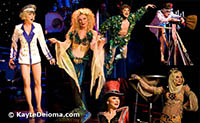 The shows change every couple months, with new performers taking the stage. The spectacle that I attended was called Mondkuss (Moon Kiss). Our MC was the multi-talented Chris, a quick-change artist in drag, who converted from little old lady to sequined mermaid and from singer to tap dancer to trapeze
The shows change every couple months, with new performers taking the stage. The spectacle that I attended was called Mondkuss (Moon Kiss). Our MC was the multi-talented Chris, a quick-change artist in drag, who converted from little old lady to sequined mermaid and from singer to tap dancer to trapeze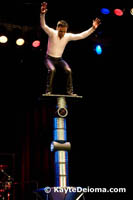 artist in the blink of an eye.
artist in the blink of an eye.
Chris was accompanied on stage by a tightrope walker, juggler, trapeze artist, hand-stand acrobat, vertical rope performer, and a balancing act. 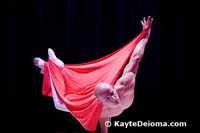 Soprano Elizabeth Haumann added vocal contrast, singing sometimes solo and also in duets with Chris. Songs were in both German and English, with at least one other language thrown in for good measure.
Soprano Elizabeth Haumann added vocal contrast, singing sometimes solo and also in duets with Chris. Songs were in both German and English, with at least one other language thrown in for good measure.
In June and July 2007, Circus-Theater BINGO will take the stage with their production of Cult, including eighteen performers from the Ukraine and Moldavia. Among the acrobatics, it will contain more dance elements, pantomime and the multi-genre music quartet, Bryats Band.
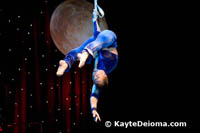 The amount of any language used in a production varies by show, but there’s always plenty to enjoy for those who don’t speak German. Most shows are family friendly, but some include adult content, so check with the theater before booking tickets for children.
The amount of any language used in a production varies by show, but there’s always plenty to enjoy for those who don’t speak German. Most shows are family friendly, but some include adult content, so check with the theater before booking tickets for children.
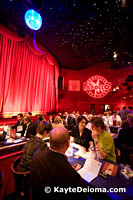 Dinner is available either upstairs before the show in the glass-enclosed dining room overlooking the Rhine, or in the theater itself before and during the show. Only beverages are available in the balcony seats. Show tickets can be purchased without dinner. You can also dine
Dinner is available either upstairs before the show in the glass-enclosed dining room overlooking the Rhine, or in the theater itself before and during the show. Only beverages are available in the balcony seats. Show tickets can be purchased without dinner. You can also dine 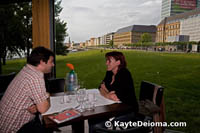 in the upstairs restaurant without seeing the show. Smoking is allowed in the theater except during the smoke-free Sunday matinee, but I didn’t notice is being overly smoky.
in the upstairs restaurant without seeing the show. Smoking is allowed in the theater except during the smoke-free Sunday matinee, but I didn’t notice is being overly smoky.
Occasionally, special one or two-night productions will interrupt the run of a longer show. For those planning a corporate meeting or conference in Dusseldorf, Roncalli’s Apollo Varieté also provides an opportunity to work your program or product into a special performance by their artists.
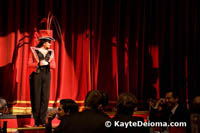 Roncalli’s Apollo Varieté
Roncalli’s Apollo Varieté
Apollo Platz 1
40213 Dusseldorf
49 (0) 211-828-9090
www.apollo-variete.com
info@apollo-variete.com

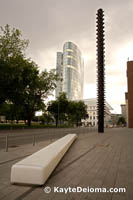 Dusseldorf is all about art and aesthetics. From its architecture and public art installations to its ten art museums and numerous galleries. You’ll see Kunst, the German word for art, everywhere. You’ll find the museum kunst palast (sic), Kunsthalle, Kunstverein, Kunstsammlung, Kunstacademie – palace, hall, association, collection and academy respectively – as well as the shortened K20 and K21 for 20th and 21st century art.
Dusseldorf is all about art and aesthetics. From its architecture and public art installations to its ten art museums and numerous galleries. You’ll see Kunst, the German word for art, everywhere. You’ll find the museum kunst palast (sic), Kunsthalle, Kunstverein, Kunstsammlung, Kunstacademie – palace, hall, association, collection and academy respectively – as well as the shortened K20 and K21 for 20th and 21st century art.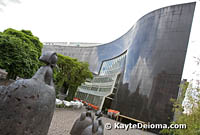 I started at Grabbeplatz, a square just north of Old Town flanked by the elegantly curved black façade of the K20 Versammlung Nordrhein-Westfalen (North Rhine Westphalia Collection) to the north and the Kunsthalle and Kunstverein sharing a utilitarian building to the south.
I started at Grabbeplatz, a square just north of Old Town flanked by the elegantly curved black façade of the K20 Versammlung Nordrhein-Westfalen (North Rhine Westphalia Collection) to the north and the Kunsthalle and Kunstverein sharing a utilitarian building to the south.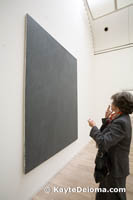 The K20 collection was built around an initial acquisition of around 100 paintings and drawing s by Paul Klee, which is displayed in three dedicated galleries. There are also two rooms devoted to Chinese-influenced German artist Julius Bissier and another two dominated by Gerhard Richter, one of the few living artists whose work is on display in K20.
The K20 collection was built around an initial acquisition of around 100 paintings and drawing s by Paul Klee, which is displayed in three dedicated galleries. There are also two rooms devoted to Chinese-influenced German artist Julius Bissier and another two dominated by Gerhard Richter, one of the few living artists whose work is on display in K20.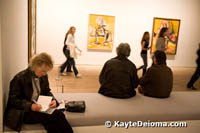 Not so numerous, but equally impressive, are the works of other 20th century artists including Picasso, Dali, Matisse, Magritte, Chagall, Kandinsky, Ernst, Beckman, Pollack and Warhol. There is also a significant amount of space devoted to temporary exhibits. The marvelous collection Picasso: Painting Against Time was having an extended run while I was there.
Not so numerous, but equally impressive, are the works of other 20th century artists including Picasso, Dali, Matisse, Magritte, Chagall, Kandinsky, Ernst, Beckman, Pollack and Warhol. There is also a significant amount of space devoted to temporary exhibits. The marvelous collection Picasso: Painting Against Time was having an extended run while I was there.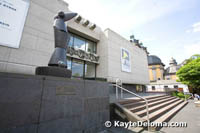 Across the square both the Kunsthalle and Kunstverein offer rotating exhibits of work by contemporary artists. It’s a large, well-lit space, but there were disappointingly few pieces in the Kunsthalle exhibit. A couple of them were interesting, but most forgettable. The best thing I can say about the work is that it was a temporary exhibit and will soon be replaced with something else.
Across the square both the Kunsthalle and Kunstverein offer rotating exhibits of work by contemporary artists. It’s a large, well-lit space, but there were disappointingly few pieces in the Kunsthalle exhibit. A couple of them were interesting, but most forgettable. The best thing I can say about the work is that it was a temporary exhibit and will soon be replaced with something else.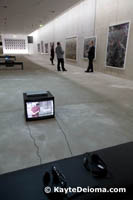 I had better luck when I stopped across town at the Kunsthalle’s other location, Kunst Im Tunnel (KIT), literally art in a tunnel at the foot of the Rheinknie Bridge. They’re open until 7 pm, an hour later than other museums, so I stopped there before going to a show at the Apollo Theater next door.
I had better luck when I stopped across town at the Kunsthalle’s other location, Kunst Im Tunnel (KIT), literally art in a tunnel at the foot of the Rheinknie Bridge. They’re open until 7 pm, an hour later than other museums, so I stopped there before going to a show at the Apollo Theater next door.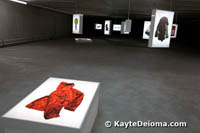 Scene, is a project of the 701 e.V. initiative, focusing on the work of young Dusseldorf artists. This particular collection of photographers were all students of Thomas Ruff (whose work you can see at K21) while he taught photography at the Kunstacademie Dusseldorf from 2000 to 2006.
Scene, is a project of the 701 e.V. initiative, focusing on the work of young Dusseldorf artists. This particular collection of photographers were all students of Thomas Ruff (whose work you can see at K21) while he taught photography at the Kunstacademie Dusseldorf from 2000 to 2006.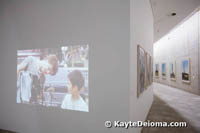 in a dark corner – an appropriate space to show off Lisa Nguyen’s Shipwrecked consisting of Durotrans light panels suspended from the ceiling and mounted on display tables.
in a dark corner – an appropriate space to show off Lisa Nguyen’s Shipwrecked consisting of Durotrans light panels suspended from the ceiling and mounted on display tables.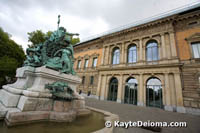 I didn’t have a chance to visit the K21 Collection of North Rhine Westphalia, but I did walk by the building after hours. The 21st Century art collection is located in the historicStändehaus, the original state parliament building, completed in 1880 and restored in 1947 after it was damaged in WWII. The Parliament moved to a new, modern building on the Rhine in 1988. The Ständehaus re-opened in 2002 as K21.
I didn’t have a chance to visit the K21 Collection of North Rhine Westphalia, but I did walk by the building after hours. The 21st Century art collection is located in the historicStändehaus, the original state parliament building, completed in 1880 and restored in 1947 after it was damaged in WWII. The Parliament moved to a new, modern building on the Rhine in 1988. The Ständehaus re-opened in 2002 as K21.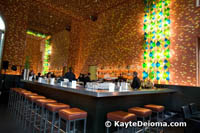 It’s an odd juxtaposition of the old and the new. Even on the outside of the building, quirky modern pieces have been strategically placed to hint at the buildings contents. A metal sculpture of a giant pistol is bolted to the cobblestones next to the 1897 bronze fountain of Father Rhine and His Daughters by Karl Janssen. A large baby-blue padlock hangs from a hook on the historic façade, and a bright yellow banana is painted near the front entrance. The swanky Bar am Kaiserteich at the back of the building stays open after the museum closes.
It’s an odd juxtaposition of the old and the new. Even on the outside of the building, quirky modern pieces have been strategically placed to hint at the buildings contents. A metal sculpture of a giant pistol is bolted to the cobblestones next to the 1897 bronze fountain of Father Rhine and His Daughters by Karl Janssen. A large baby-blue padlock hangs from a hook on the historic façade, and a bright yellow banana is painted near the front entrance. The swanky Bar am Kaiserteich at the back of the building stays open after the museum closes.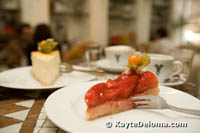 Like afternoon tea in England, Kaffee und Kuchen or coffee and cake is a time-honored ritual in Germany. Rather than serving dessert after a meal as we do in the U.S., sweets get their own dedicated meal mid-afternoon. Restaurants may hold strictly to their Coffee Table hours of 2:30 or 3 pm until 5, then re-open for dinner at 6:30 or 7 pm, but cafes are more flexible, and will serve you coffee and cake until they run out of cake.
Like afternoon tea in England, Kaffee und Kuchen or coffee and cake is a time-honored ritual in Germany. Rather than serving dessert after a meal as we do in the U.S., sweets get their own dedicated meal mid-afternoon. Restaurants may hold strictly to their Coffee Table hours of 2:30 or 3 pm until 5, then re-open for dinner at 6:30 or 7 pm, but cafes are more flexible, and will serve you coffee and cake until they run out of cake.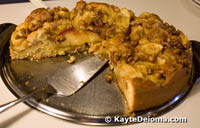 As for cake, the Germans go all out with elegant layer cakes, streusel cakes with different kinds of fruit such as cherry or plum, apple cakes similar to a deep dish pie, fancy fruit tortes and gooey cream cakes. Then there are the cheese cakes, flat or tall, made with different kinds of cheese depending on the baker’s preferences, and sometimes combined with other ingredients like fruit or chocolate.
As for cake, the Germans go all out with elegant layer cakes, streusel cakes with different kinds of fruit such as cherry or plum, apple cakes similar to a deep dish pie, fancy fruit tortes and gooey cream cakes. Then there are the cheese cakes, flat or tall, made with different kinds of cheese depending on the baker’s preferences, and sometimes combined with other ingredients like fruit or chocolate.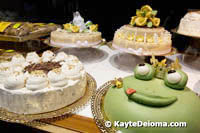 Café Heinemann (
Café Heinemann ( 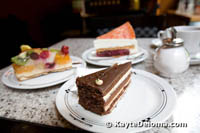 At the south end of Königsallee, signs will direct you around the corner to Bahnstrasse 16. If the tantalizing cake selection in the window doesn’t draw you in, the fanciful chocolates will. In May, the selection included chocolate May beetles filled with champagne truffle and white chocolate asparagus spears in honor of asparagus season. Although the café/bakery is in the Viennese tradition, cakes range from the traditional Mozart torte with layers of chocolate, hazelnut cream and marzipan to the original Hawaii cake with at least seven kinds of fruit. For ease of ordering from the dozen or so varieties available, you select your cake from the display case up front before you sit down and order coffee.
At the south end of Königsallee, signs will direct you around the corner to Bahnstrasse 16. If the tantalizing cake selection in the window doesn’t draw you in, the fanciful chocolates will. In May, the selection included chocolate May beetles filled with champagne truffle and white chocolate asparagus spears in honor of asparagus season. Although the café/bakery is in the Viennese tradition, cakes range from the traditional Mozart torte with layers of chocolate, hazelnut cream and marzipan to the original Hawaii cake with at least seven kinds of fruit. For ease of ordering from the dozen or so varieties available, you select your cake from the display case up front before you sit down and order coffee.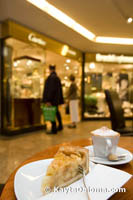 If you’re inside the maze of shopping passages along the east side of Königsallee, make your way to the top of the rotunda in the Kö Galerie to the Rondo Café & Bar. The tables all have a view down into the many levels of exclusive shops below, and if you can’t afford the Cartier shop next to the café, coffee and cake is no more expensive than anywhere else in town. The cakes are made by the same baker who supplies the café at the Benrath Palace. You won’t find the 25 varieties available at Benrath, but the half a dozen on offer each day are sure to be excellent. I recommend the Apfelkuchen (apple cake). Rondo Café, Königsallee 60 in the Kö Galerie.
If you’re inside the maze of shopping passages along the east side of Königsallee, make your way to the top of the rotunda in the Kö Galerie to the Rondo Café & Bar. The tables all have a view down into the many levels of exclusive shops below, and if you can’t afford the Cartier shop next to the café, coffee and cake is no more expensive than anywhere else in town. The cakes are made by the same baker who supplies the café at the Benrath Palace. You won’t find the 25 varieties available at Benrath, but the half a dozen on offer each day are sure to be excellent. I recommend the Apfelkuchen (apple cake). Rondo Café, Königsallee 60 in the Kö Galerie.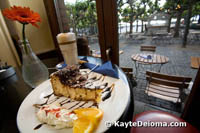 If you’re in the Altstadt ( Old Town), a nice place for an afternoon break isCafé Schwan, right on the square across from the old Schlossturm ( Castle Tower). If the weather is nice, there’s plenty of outdoor seating, but there’s lots of room inside too. The cake selection may not be very large, but you can pretty much depend on finding a great piece of cheesecake. Proprietor Kerstin Schwan, who also owns several other Dusseldorf restaurants, offers a full menu of German and international cuisine at the cafe. It’s especially popular for breakfast or brunch. Mühlenstraße 2 on the Burgplatz
If you’re in the Altstadt ( Old Town), a nice place for an afternoon break isCafé Schwan, right on the square across from the old Schlossturm ( Castle Tower). If the weather is nice, there’s plenty of outdoor seating, but there’s lots of room inside too. The cake selection may not be very large, but you can pretty much depend on finding a great piece of cheesecake. Proprietor Kerstin Schwan, who also owns several other Dusseldorf restaurants, offers a full menu of German and international cuisine at the cafe. It’s especially popular for breakfast or brunch. Mühlenstraße 2 on the Burgplatz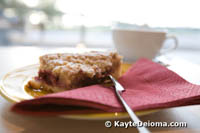 If your exploring
If your exploring 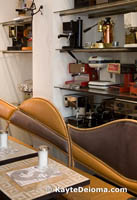
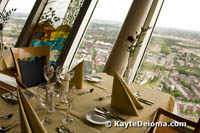 The rotating Top 180 (
The rotating Top 180 (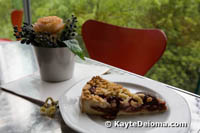 If you make the trip out to the
If you make the trip out to the